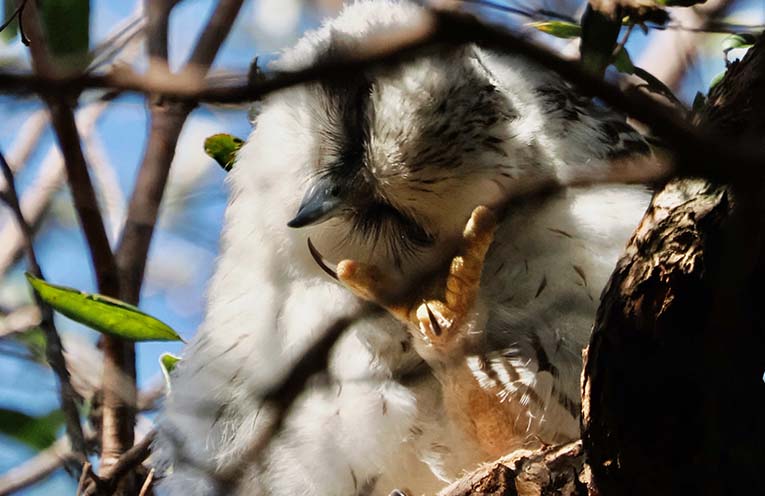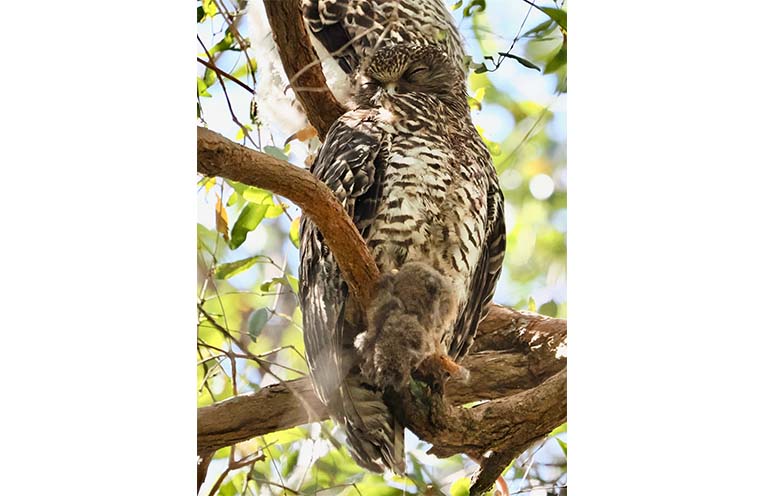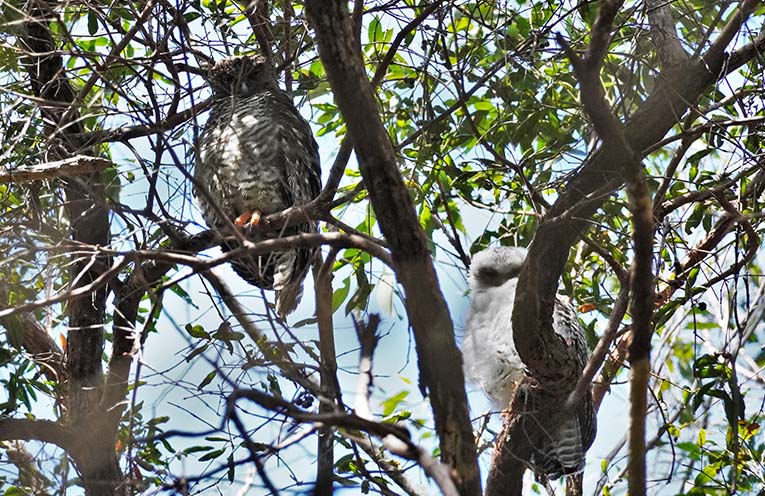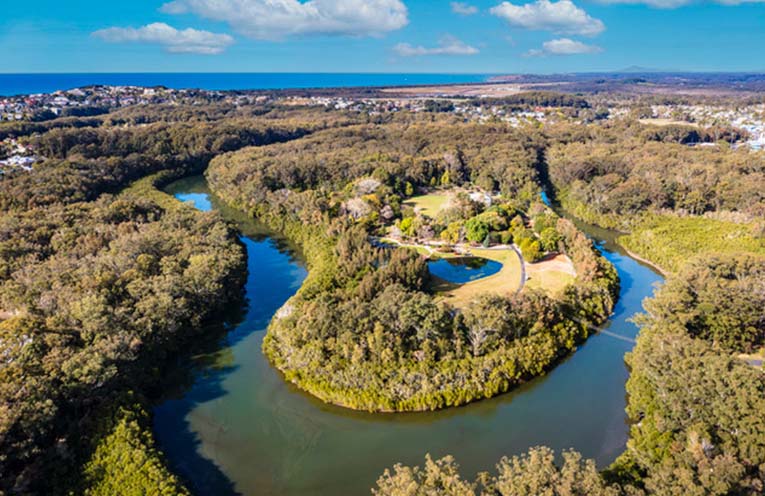
A FLUFFY white chick has made proud parents of the Powerful Owl pair who frequent the North Coast Regional Botanic Garden in Coffs Harbour.
The visually cute chick has impressively big talons and sharp claws.
 Advertise with News of The Area today.
Advertise with News of The Area today.It’s worth it for your business.
Message us.
Phone us – (02) 4981 8882.
Email us – media@newsofthearea.com.au
Birders have been down to admire and photograph the newborn.
Graham Tupper, President of the Friends of the North Coast Regional Botanic Garden, in chatting with News Of The Area, posed, “Powerful Owls can have a territory or home range of up to 4,000ha, taking in all the hills and forests around Coffs Harbour, so why do they choose the middle of a city to breed?
“The two main factors are that the Botanic Garden has some very old forest trees which provide the large nesting hollows needed by the owl, and there is an abundant supply of food in the form of possums and gliders.
“The possums and gliders are relatively abundant because the garden provides a variety of natural food plants,” he said.
Many of the retained natural forest trees in the garden are hundreds of years old meaning they contain many natural nesting hollows for animals like possums and gliders to hide in by day.
Powerful Owls breed from late autumn through winter and generally lay two eggs.
The female incubates the eggs while the male provides food.
Breeding pairs can stay together for more than 30 years.
The eggs take about 40 days to hatch and the fluffy white chicks fledge at about six-to-eight weeks.
“Powerful Owl chicks will stay close to their parents for a few months before eventually flying off to find their own territory and a mate,” said Graham.
The Powerful Owl is listed as a vulnerable species in NSW and endangered in Victoria.
They generally follow watercourses over their territory and roost by day in the thicker foliage of trees along the valley floor.
Often they can be found holding a half-eaten possum in their powerful talons while they roost.
On the ground under their roosting site can be found pellets of regurgitated fur and bone, about the size of a chook egg.
“Our Botanic Garden in Coffs Harbour is relatively unique in Australia by retaining old growth natural habitat with abundant food for apex predators like the Powerful Owl so close to the centre of a city and surrounded by the bushland along Coffs Creek.”
To observe the Powerful Owls and their chick in the Botanic Gardens, they can generally be found in the rare and endangered plants grove halfway down the main path through the forest, on the right-hand side.
Visitors need to be quiet and not cause any disturbance to the owls as they try to rest through the day.
“They are usually hidden in thick foliage at the top of the tree because if smaller birds see them the small birds gang up to harass the owls and try to force them away from their territory,” said Graham.
By Andrea FERRARI


